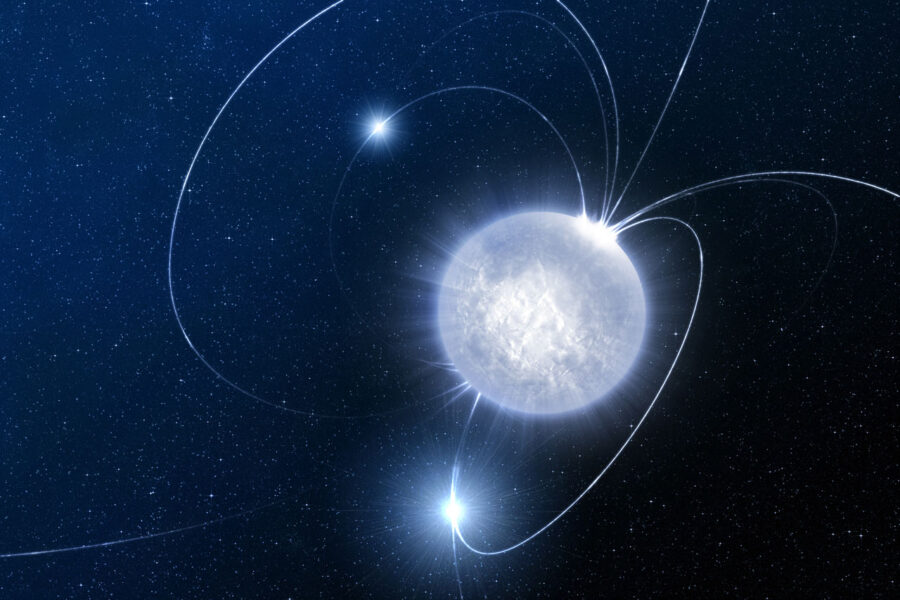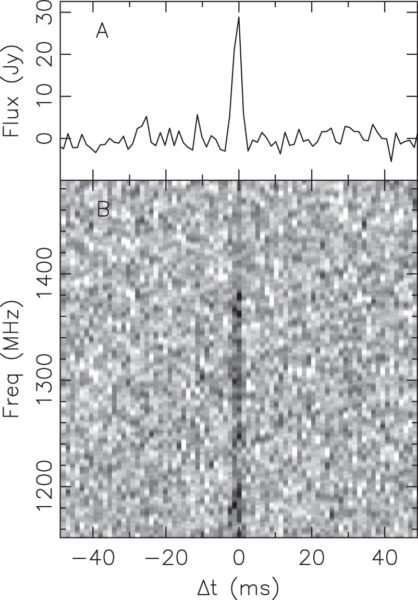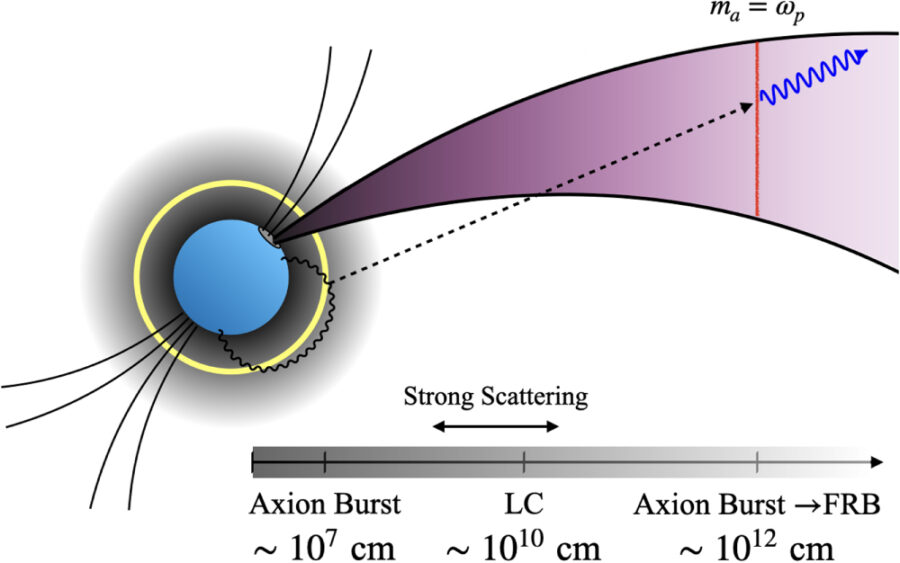New research proposes a way for fast radio bursts to escape the confines of a magnetized star and jet out into space — by getting help from theoretical particles called axions.

ESO / L.Calçada; CC BY 4.0
New research proposes a way for fast radio bursts to escape the confines of a magnetized star and jet out into space — by getting help from theoretical particles called axions.
How to Make Cosmic Fireworks
Fast radio bursts — intense flashes of radio waves lasting a fraction of a second — were discovered by chance in 2007 and have puzzled astronomers ever since. Now, nearly two decades on from the discovery of these cosmic fireworks, we have plenty of theories for what causes them. Many theories have homed in on magnetars, the highly magnetized, extremely dense remnants of exploded massive stars.
Magnetar-based fast radio burst theories come in two main flavors: those in which the burst is generated close to the magnetar’s surface, and those in which the burst forms in the tangled stream of plasma that constantly flows out from the magnetar. The latter crop of models easily explains how fast radio bursts jet out into space, but they’re stymied by the bursts’ rapid variability. The former group of models naturally produces highly variable bursts, but they can’t yet explain how a burst escapes the magnetar’s surroundings, where there is a sea of plasma that scatters the burst and saps its energy.

Bannister et al. / Astrophysical Journal Letters 2017
There and Back Again
In a recent research article, Anirudh Prabhu (Princeton University) proposed a way for fast radio bursts to break free with a little help from theoretical particles called axions. Axions are thought to be extremely light, and their existence might solve a lingering problem in particle physics related to the properties of neutrons. These particles have also been proposed to be an important component of cold dark matter. (Prabhu emphasized that while axions happen to be a dark matter candidate, the validity of the fast radio burst model doesn’t hinge on axions actually being dark matter.)
Axions are thought to couple to photons, and under the right conditions, they can convert into photons and vice versa. Because of this property, Prabhu suggested that fast radio burst photons can sneak through the plasma surrounding the magnetar disguised as axions. When the coast is clear, so to speak, the axions convert back to photons and the burst continues on its journey into space.

Prabhu / Astrophysical Journal Letters 2023
An Axion Answer
Here’s how that might work, physically. After a radio burst is generated near the magnetar’s surface, strong electric fields pointing parallel to the background magnetic field transform photons into axions, creating an axion burst. The axion burst travels outward, streaming along with the outflowing plasma wind as the magnetar’s magnetic field weakens. At a certain point, the axion burst begins to resonate with the surrounding plasma, regenerating a radio burst with properties similar to the original radio burst.
Prabhu notes that this theory works for any process that generates a strong parallel electric field close to the magnetar’s surface, such as a magnetar flare. The clincher for the axion theory would be the detection of axions associated with a fast radio burst, the feasibility of which Prabhu plans to explore in upcoming work.
Citation
“Axion-Mediated Transport of Fast Radio Bursts Originating in Inner Magnetospheres of Magnetars,” Anirudh Prabhu 2023 ApJL 946 L52. doi:10.3847/2041-8213/acc7a7
This post originally appeared on AAS Nova, which features research highlights from the journals of the American Astronomical Society.
 0
0









Comments
You must be logged in to post a comment.